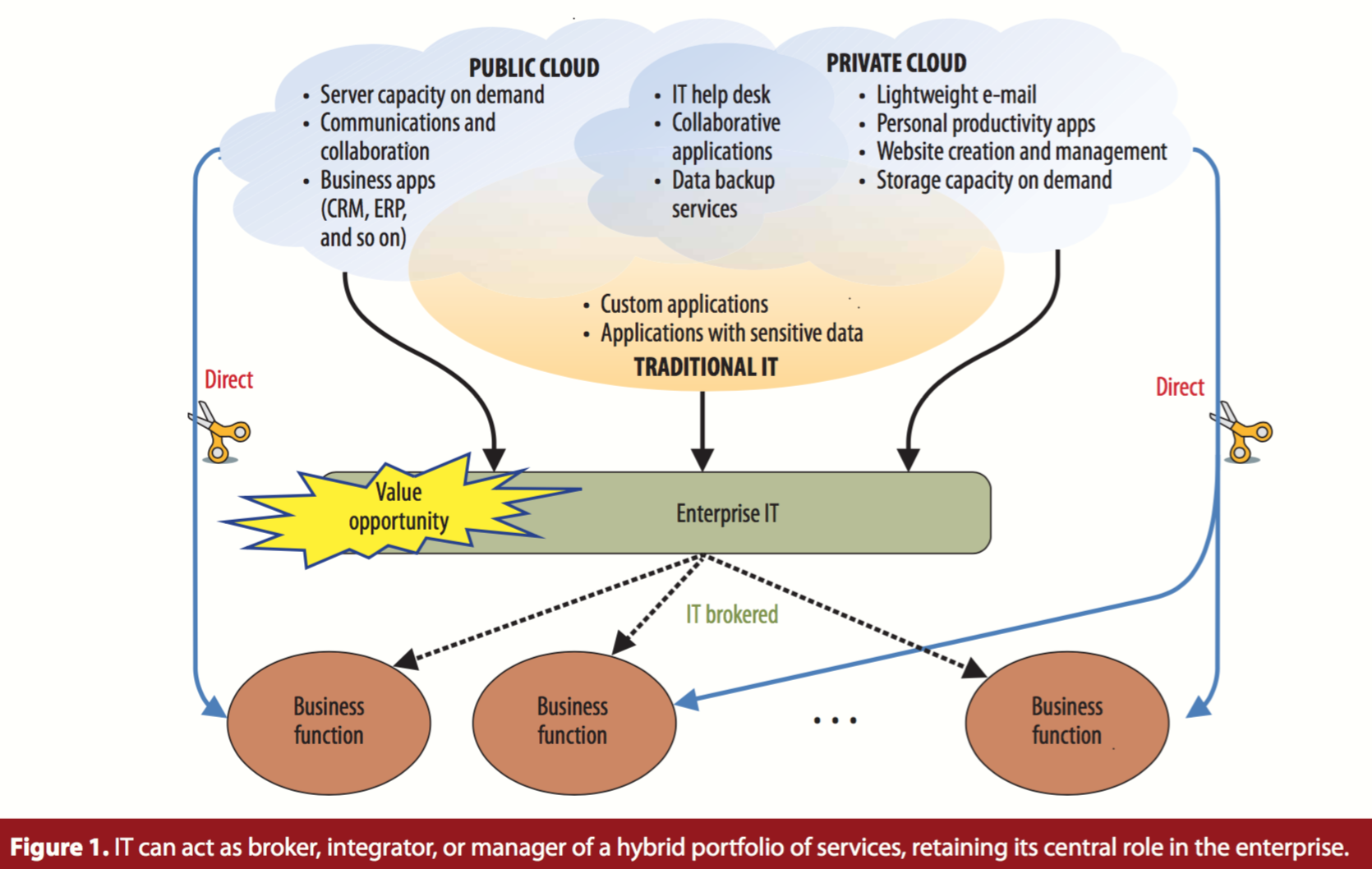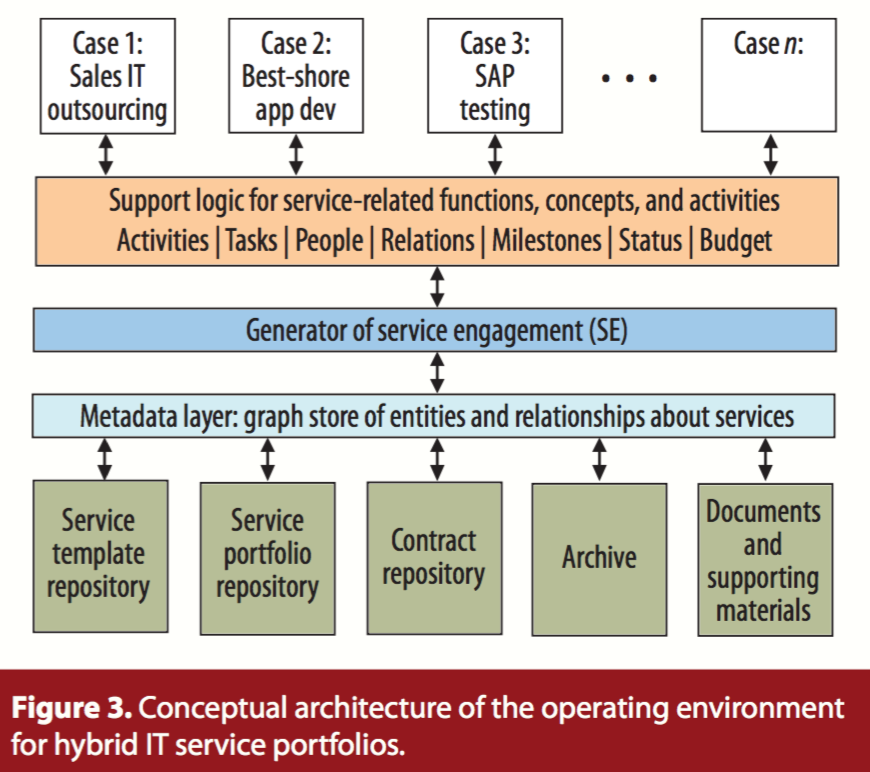Introduction to ESARC:
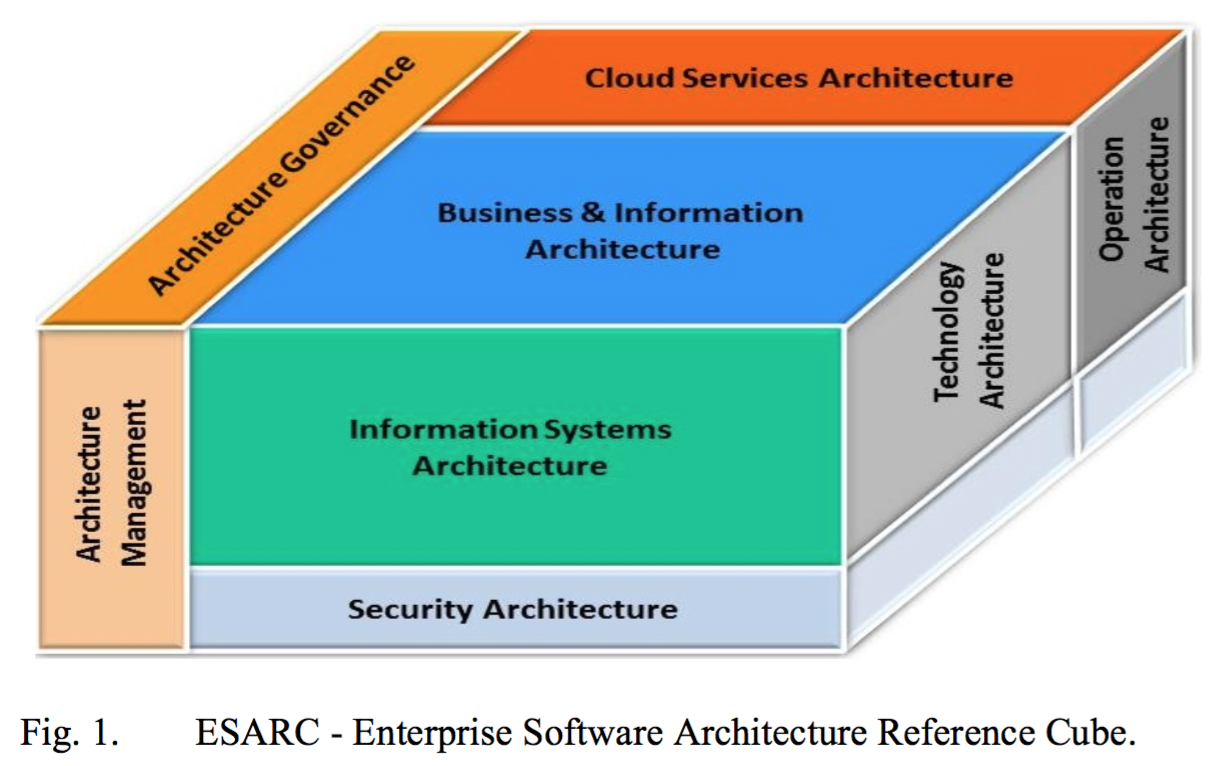
ESARC Business & Information Reference architecture:
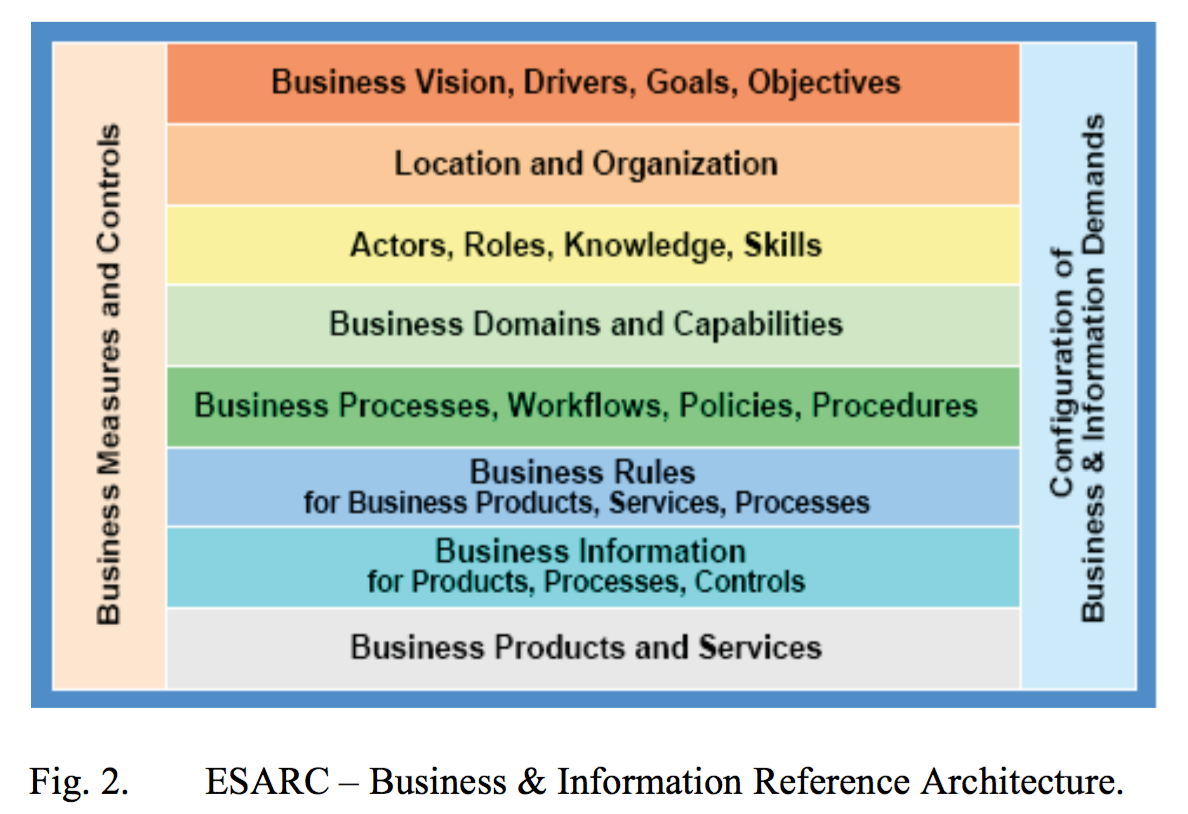
ESARC Business & Information Reference architecture metamodel:
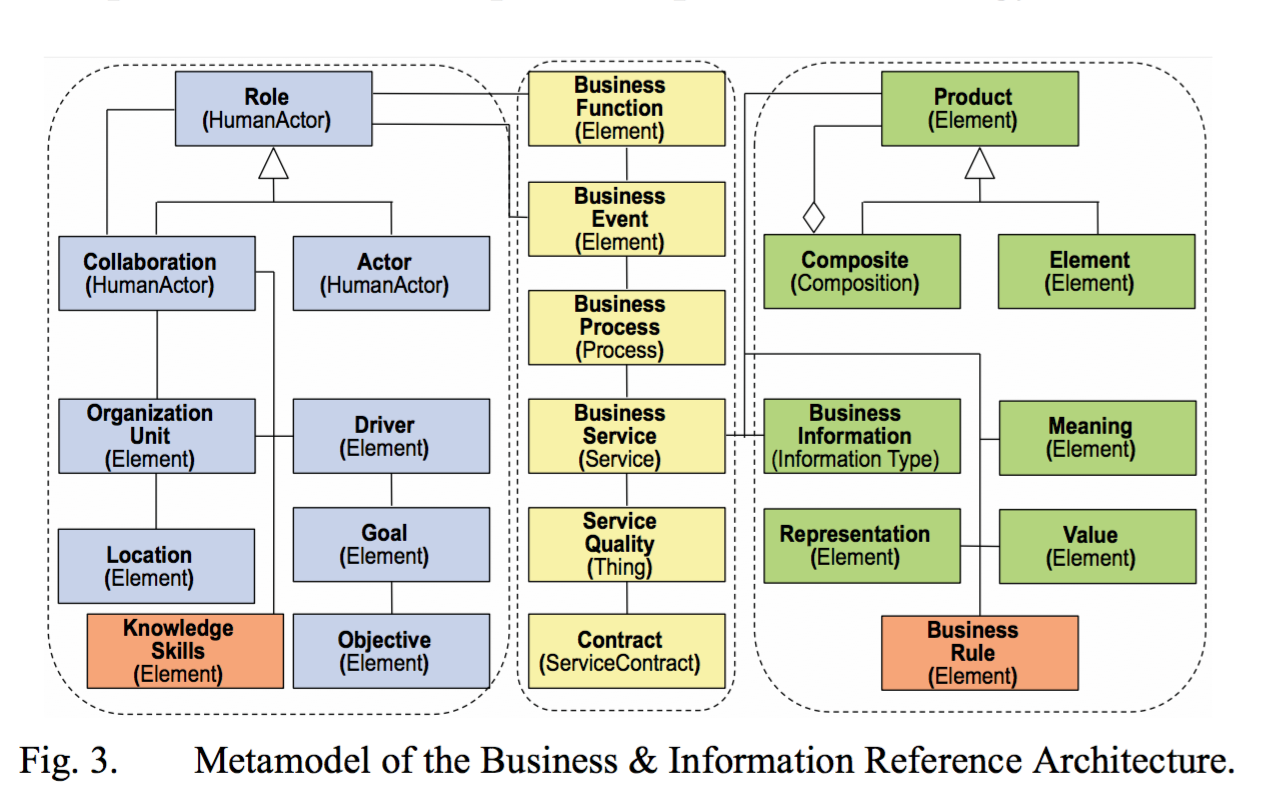
ESARC Information Systems Reference architecture:
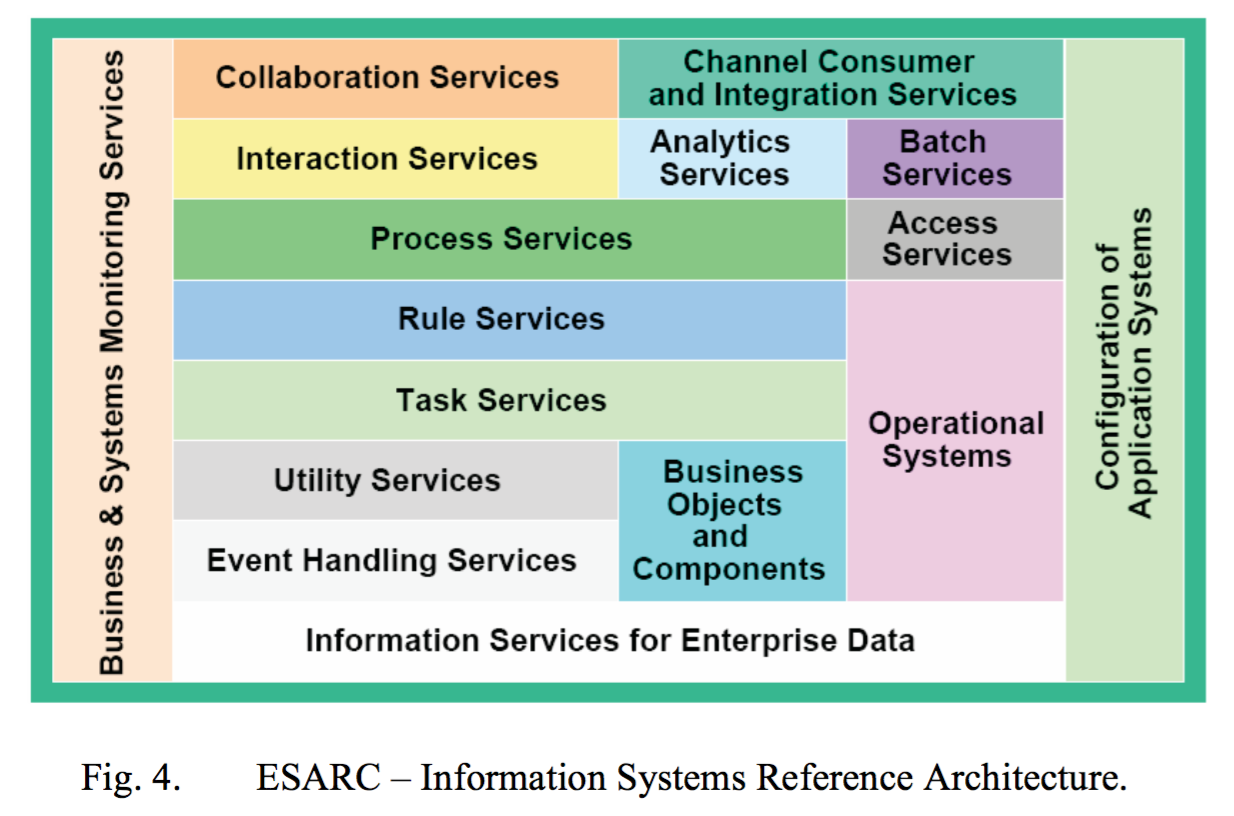
Source: Alfred Zimmermann et al, Towards Service-oriented Enterprise Architectures for Big Data Applications in the Cloud, IEEE International Enterprise Distributed Object Computing Conference Workshops, 2013.

